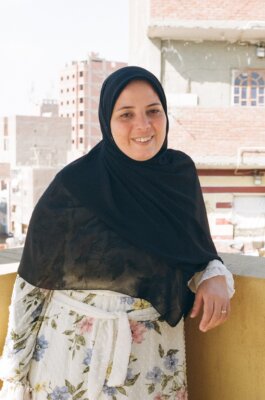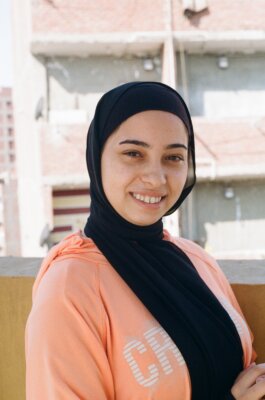



This project is carried out in collaboration with the French Institute in Egypt and the French Institute.















Gehad
Soha
Mona
Wafaa
Hoda
Aïda
Fatheya
Hind
Nada
Warda
Yasmina











The word ‘khayameya’ comes from khayma, which means ‘tent’ in Arabic.
This embroidery consists of colourful appliqués of geometric or floral motifs, inspired by Islamic art and mosaics, sewn by hand onto a solid fabric background. Craftsmen cut precisely shaped pieces of fabric, often cotton or silk, and carefully stitch them together to form vibrant patterns, reminiscent of stained glass windows or Arab-Andalusian motifs.
Traditionally, these works were used to decorate the inside of tents during religious celebrations and ceremonies, such as Ramadan or weddings. Today, the khayameya is also appreciated as a wall art and decorative element, embodying Egyptian cultural heritage and craftsmanship handed down from generation to generation.
Today, as a living art form, it is taught in schools to girls and women - along with other craft techniques - so that they can go on to improve their living conditions.






This project is carried out in collaboration with the French Institute in Egypt and the French Institute.



Following on from an initial exploratory study of Egypt's creative and cultural industries for the Institut Français, Itinérance is piloting a co-creation workshop based on a traditional Egyptian craft: the Khayameya. Where the banks of the Nile meet the thousand-year-old warmth of a city that unites past and present, we meet the women of the TAWASOL association.












Gehad
Soha
Mona
Wafaa
Hoda
Aïda
Fatheya
Hind
Nada
Warda
Yasmina
The word ‘khayameya’ comes from khayma, which means ‘tent’ in Arabic.
This embroidery consists of colourful appliqués of geometric or floral motifs, inspired by Islamic art and mosaics, sewn by hand onto a solid fabric background. Craftsmen cut precisely shaped pieces of fabric, often cotton or silk, and carefully stitch them together to form vibrant patterns, reminiscent of stained glass windows or Arab-Andalusian motifs.

Traditionally, these works were used to decorate the inside of tents during religious celebrations and ceremonies, such as Ramadan or weddings. Today, the khayameya is also appreciated as a wall art and decorative element, embodying Egyptian cultural heritage and craftsmanship handed down from generation to generation.
Today, as a living art form, it is taught in schools to girls and women - along with other craft techniques - so that they can go on to improve their living conditions.

